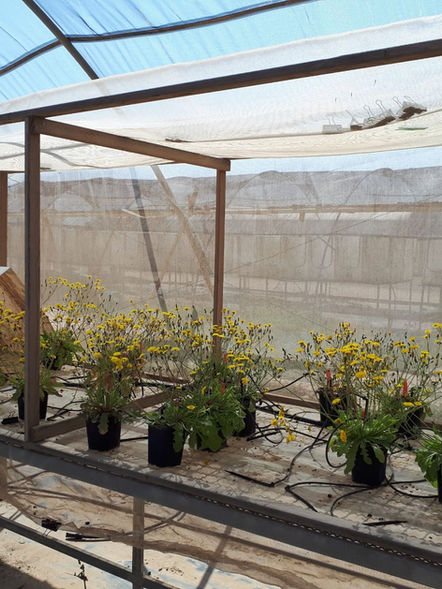
VARIATION IN DISPERSAL TRAITS - ECOLOGY, EVOLUTION AND CONSEQUENCES.
Variation in functional traits in general, and in dispersal-related traits in particular, has many sources and consequences. In one part of this project, we tested whether the genetic relatedness of a mother plant and her offspring affect the dispersal phenotype of the offspring (seeds). This research involves sampling of a model plant, Crepis sancta from mapped populations, experimental pollination that controls for the genetic relatedness of the seeds and genetic analysis (Dener et al. 2021)
Analyses of the variation in dispersal traits of Asteraceae indicated that much of the variation in those traits is expressed at fine scales and within individuals. An interesting question is whether this variation is mainly a ‘noise’ or whether it is shaped and potentially selected for as a mixed dispersal strategy.
As a first step, we launched a project aiming to quantify the hierarchical structure of intraspecific variation in dispersal traits. We started conducting a comprehensive, multi-level, analyses of variation in dispersal traits, and their tradeoffs in two heteromorphic species (Crepis sancta and Geropogon hybridus) and one monomorphic species (Tragopogon coelsyriacus) sampled along a precipitation gradient. We established a nethouse experiments, to test whether covariation between dispersal linked traits and post-dispersal life history traits, such as short-term germination speed and longer-term dormancy, can indicate colonization-competition and dispersal-dormancy tradeoffs. Furthermore, by conducting this experimental work and the data analysis in a hierarchical manner, we will test whether the predicted tradeoffs can be simply scaled-up across organizational levels, or whether tradeoff patterns vary in a predicted manner corresponding to the strength of selection pressures, environmental drivers and constraints at various organizational levels.
Collaborators
Selected papers
-
Chen, S.C. and Giladi, I. 2018. Allometric relationships between masses of seed functional components. Perspectives in Plant Ecology, Evolution and Systematics, 35:1-7.
-
Snell, R.S., Beckman, N.G., Fricke, E., Loiselle, B.A., Carvalho, C.S., Jones, L.R., Lichti, N.I., Lustenhouwer, N., Schreiber, S., Strickland, C., Sullivan, L.L., Cavazos, B.R., Giladi, I., Hastings, A., Holbrook, K., Jongejans, E., Kogan, O., Montaño-Centellas, F., Rudolph, J., Rogers, H.S., Zwolak, R., Schupp, E., 2019. Consequences of intraspecific variation in seed dispersal for plant demography, communities, evolution, and global change. AoB Plants. 11(4):plz016
-
Chen S.C. and Giladi, I. 2020. Variations in morphological traits affects dispersal and seedling emergence in dispersive diaspores of Geropogon hybridus. American Journal of Botany. 107(3): 436-444.
-
Dener, E., Shemesh, H. and Giladi, I. 2021. The effect of pollen source on seed traits and dispersability in the heterocarpic annual Crepis sancta. Journal of Plant Ecology









